Make Clowns Funny Again
Holding low comedy in high regard
1. The Clown Continuum Hypothesis
In 2021, I posted the following speculation on my Substack:
Hypothesis: As society becomes more confused about defining personal “identity” in public, and our integrity is compromised by technology, the value of owning a “private face” — separated from the world — will increase. […]
As a side effect of that, all kinds of masked play should increase in popularity. Hence, the circus clown could have a renaissance — first as a feared figure, then as a figure of fun and relief.
We could all use some good old-fashioned, socially integrated clowning now, in this dire world. And a proper clown is invincible — there’s no thicker armor around one’s true self than that painted face.
I could elaborate on why a particular clown-faced villain became an icon of fear, or why Boris Johnson created a “clownish” public face to become invulnerable to criticism… but that’s for another essay.
- A. R. Yngve, “Losing Face in the Global Village” (2021)
Don’t let this poster fool you! Like the movie trailer, it’s a bait-and-switch. The actual movie JOKER: FOLIE A DEUX tells a completely different story…
So far, it seems I was a tad too hopeful and optimistic. In December 2024, the “evil” clowns in popular entertainment still dominate.
JOKER: FOLIE A DEUX (2024) — the anticipated sequel to the scary-clown hit movie JOKER (2019) — bombed. Why?
The huge success of the previous movie had so frightened the American cultural establishment, and so excited the public, that director-scripwriter Todd Phillips was facing pressure from all sides.
Todd Phillips. (CC image credit: Harald Krichel)
Phillips must have understood the moral panic he had accidentally triggered in 2019. The legacy media screamed that his hit movie was a menace, a threat — a bugle call that could awaken an army of incels and misfits and send them on a rampage.
That was unfair. Todd Phillips is a good boy! Not a social disruptor at all. The moral panic wasn’t his conscious intent. Nothing he has said in public indicates that he wanted to shake up American society or agitate its outsiders; he used to make comedies like THE HANGOVER.
(And besides: Why would a movie based on a comic book be “dangerous”? Are we doing the 1950s again? Why do moral panics focus on trivial things instead of real problems? The “panic” itself seems like theater, a ritual hunting of the scapegoat.)
But by mashing up TAXI DRIVER (1976) and THE KING OF COMEDY (1982) with an iconic scary clown, Todd Phillips’ JOKER (2019) happened to tap into several ongoing trends:
1. Simmering tensions between the American public and an establishment that seemed to increasingly ignore their problems, and/or despise them.
2. The return of masks and masked play to the media landscape: digital filters, cosplay … and I would argue also the mask mandates of the Covid-19 pandemic, that really made masks “go mainstream.”
3. The mental instability and dissociation caused by imposing nation-wide Covid lockdowns — and society’s attempt to replace normal human interaction with video meetings and social media. The ensuing collective mental state, amplified by the Internet, made it easier for people to see themselves in the disturbed protagonist of JOKER.
4. Clowning has become a very potent form indeed, and some actors found out. Not only artists, but also politicians.
Money talks: Todd Phillips’ first JOKER movie made a billion dollars. Then he found himself caught between a rock and a hard place. From one side, he was being squeezed by an establishment that warned he had unleashed something primitive and violent (translation: he was making the proles restless).
Pressuring him from another side, the public demanded to see the “dangerous” clown perform again, to act out their suppressed resentment and pent-up anger at society, by making make-believe chaos.
Todd Phillips couldn’t simply say no to a sequel. Everyone wanted him to make more money for the legacy-media industry; so did the willing audience.
But if he pleased one side, he would anger another. So Todd Phillips, consciously or not, made a third choice: disappoint everybody and take the paycheck.
(Image source: Rottentomatoes.com)
His sequel JOKER: FOLIE A DEUX (2024) disappointed the establishment by being a depressing drag of a commercial failure … and disappointed the audience by being a depressing, drawn-out humiliation of the dangerous clown (jilted, raped, and finally stabbed to death in utter degradation).
It was a fiasco, but Todd Phillips got the public and the establishment off his back. He had shown that he was done with the clown. It had been ritually put to death, to show it was neither a threat to the establishment nor a conduit for the public’s suppressed emotions — nor something Phillips wanted anything more to do with.
2. The Man Who Laughs
So is the clown is done with society…? Wouldn’t bet on it. Clowns keep popping up again in some form. This form is bigger than a movie, and — like the masked bogeyman in a horror movie — it can’t really be killed.
Stage actors in ancient Greece, and performers of religious rituals, wore masks. It made the act easier, and the actor as a person wasn’t confused with the role (unlike actors on the stage and screen in the 20th century). When video filters on Zoom and TikTok began to distort our faces into digital “masks,” we returned to antiquity. These pixel masks are now the faces of our performances, and also protect our true faces (i.e. our integrity, identity, “soul”) from being sucked away…
Clownface has proved so potent, it actually frightened the American establishment into a moral panic. Sociologists of the future are going to hold seminars about this outbreak of hysteria. Why such an overreaction to something as simple — and ancient — as a painted face? (Have these hysterics ever seen a circus clown?)
I watched many circus clowns when I grew up, mostly on television, occasionally live (traveling circuses grew increasingly rare in the postwar era). Never did it occur to me — then — that clowns would someday come to be seen as a public menace.
We all knew then what a clown was: a circus artist who put on a cartoonish “face” with a red nose — the mask that becomes the performance — plus a comical costume, and then acted out in front of an audience.
Without the painted face, the act would have a different meaning. The clownface isn’t a specific “person” or even the specific actor behind it. It’s a ritual mask, a totem of the chaotic impulses that exist inside every human being. The point of the circus clown act is to “act out” this chaos in a safe setting.
Watch this classical circus clown performance, and you’ll see exactly what I mean. Why do you think this form of comical pretend-violence is called “slapstick”? The term is self-explanatory: Slap… stick.
For a while, it seemed masked clowning was a dying artform. But it merely changed.
The “clown prince of crime” has always changed over time. Earlier versions of The Joker in comic-books were alternately frightening and ridiculous. The family-friendly, “camp” incarnation of 1960s television gave way to the sadistic psychopath of the 1980s. (The 1940s version could also be quite sinister.) The Joker’s origins are not only in clowning. He was also inspired by Victor Hugo’s story “The Man Who Laughs” (1869) — about a disfigured man who is doomed to always grin. (A case of the mask becoming the man.)
After the success of Christopher Nolan’s THE DARK KNIGHT (2008), featuring Heath Ledger’s knockout performance as an evil nihilist clown, clownface began to appear in political propaganda — as a threat, not played for laughs.
Remember this creepy anti-Obama image that appeared in 2009, with a Joker clownface painted over it? (The original artist Firas Alkhateeb has spoken out against it.) This “clownface” juxtaposition was not made to be funny. It was a totem of fear, partly inspired by Heath Ledger’s performance in THE DARK KNIGHT (2008). But also note how “Obama Joker” seems to point directly to the 2019 version: A clownface figure threatening revolt against the status quo.
Evil clowns are still popular. In my 2021 essay, I anticipated the return of more friendly clowns, but sadly that has not yet happened…
Popular horror movies of the 2020s feature an evil clown (TERRIFIER) and a demon that disfigures its victims with a “Joker”-like grin (SMILE). A grin or smile that does not reach the eyes always looks false — like a living mask, or a madman’s deranged grimace.
THE MAN WHO LAUGHS (1928), the movie based on Victor Hugo’s story, and an inspiration for The Joker. He’s not happy, and he’s not funny. The smile is a living mask.
Why does the grin in many photos of MrBeast generate an “uncanny valley” effect on the observer? Because a forced, rigid smile that is worn like a mask does not convey warmth or sincerity. A “painted-on” smile that doesn’t reach the eyes may also suggest dissociation or personality disorder — though that isn’t automatically the case. (Image source: Wikipedia)
3. I Am Not a Cat
There’s a very specific technological aspect to the mainstreaming of masked performance. The media environment revived this form by introducing a new material: pixels.
When direct, human face-to-face interaction — such as any everyday office meeting — was replaced by video meetings, the users became screen actors. The addition of digital filters added to the theatricality: The pixelated face during a video meeting you see is basically a digital mask, used by the performer/user.
The nature of masked performance becomes evident when the technology fails, or the user makes a mistake… as in the famous “I Am Not a Cat” incident.
Sorry, wrong mask! During a 2021 video meeting, a digital filter was accidentally used wrong; hilarity ensued. “I am not a cat” became a meme. Users who are unfamiliar with a new media environment, and its unwritten rules, are bound to make a pratfall. (I wonder what had become of that user if he had not explained that he isn’t a cat.)
(Image source: Wikipedia)
Social media became a globe-spanning scene, where the performers (=users) could act out. You can watch this show anytime on TikTok, YouTube or Instagram.
Dark eyeglasses: an edge case of masks. They are “silencers” in the way they make eye contact — i.e. non-verbal communication — impossible. Their implicit message is “I’m not listening.” The Chilean dictator Augusto Pinochet used them to convey that message, and so did other tyrants. Dark glasses can effectively communicate arrogant, “macho” indifference. The social-media performer Dr. Disrespect uses this effect knowingly. His act lies somewhere between a clown and a comedian — the “ironic macho man” who acts out pretend violence as he plays live-streaming videogames.
The current media landscape (Internet, social media, smartphones, video meetings) has retrieved a very ancient form: The ritual mask.
The modern actor/clown/witchdoctor masks are mostly made of pixels — you may know them as Snapchat filters, "Masked Singer" TV shows, etc. You hide your true face to protect your soul (i.e. personal identity/sense of self), and the mask itself becomes the act.
The traditional masked witchdoctor performs a healing ritual. A painted clown also performs healing; the “patient” is the entire audience, and laughter is the best medicine. A successful clown is like a shaman or witch doctor, who drives out our collective “demons” in a controlled setting — a ritual.
(What happens to everyday work life when we increasingly rely on digital masks to represent us for meetings and communication? Could an element of superstition and “primitive”, pre-rational thinking creep into our minds…?)
(Image source: Wikipedia)
With digital filters being used to make aging actors/actresses look younger, the stage mask has finally returned to the acting profession. You no longer look at Harrison Ford’s craggy face; you look at a digital representation of an iconic Harrison Ford.
The aging actor wears the filter as a mask for his performance. Andy Serkis famously used an entire CGI body as his costume for the performance as Gollum, to great effect.
Ironically, this digital mask also hides the actor’s true face from the cameras. Even actors are getting wary of cameras capturing their souls.
The “de-aging” filter is, in effect, a mask worn by the performer. It is also protects the wearer against the ubiquitous cameras, as if to say: “Look at me, but don’t look at ME.” This is a shift back to premodern stage acting. (Image source: Lucasfilm Ltd.)
4. Mandatory Faces
A crowd of Bay Area Rapid Transit riders in June 2020 following CDC face mask guidelines at Milpitas station in Milpitas, California. (Source: Wikipedia)
And of course, Western society as a whole arrived at that point when masks became mandatory. Never mind the pros and cons of disease protection. The greater effect was psychological and social. It became not only okay, but the norm to hide one’s true face.
For certain segments of the population, these face masks turned out to be such a comforting psychological protection that they kept using them — long after the official mask mandates ended.
Hypothesis: It’s not just that people hide their faces from disease, or the gazes of others, but that the mask protects their integrity from the ubiquitous cameras.
A tribal superstition had it that cameras could “capture your soul.” Now our faces can be “captured” by cameras anywhere, anytime. You can still see some people use medical face masks in public. Is this merely germ protection, or a ward to protect the soul — i.e. one’s “true face” — from being stolen by cameras and data-hungry AI software? (Joe here had nothing to hide… right?)
I also think the social effects of mask mandates have not yet been fully examined, but I won’t dwell on that topic here. Suffice to say, that society made masks part of accepted public behavior. The masks were now everywhere, not just on screens and in fiction.
And therein lies the germ of a long-term trend: To hide and protect one’s true face as the treasure it is, in world where technology destroyed the integrity and privacy of the individual.
Speculation: Maybe this trend of public masking caused confusion around clownface. The meaning of the rite might be contested: Is the clown’s painted facemask supposed to expose, or conceal?
5. A Parenthesis
So why did Western culture use ritual masks and clownface much less than usual for a long time? Stage theater included painted faces and masks well into the Renaissance, and the forms lingered in some corners — such as British Christmas panto, Italian Commedia dell'arte, and of course circus clowns. But “serious” Western theater stopped using masks, painted faces were replaced by naturalistic makeup, and the highest ideal for actors became to perform an “authentic” face that expressed “real” inner feelings.
The actor’s living, exposed face became a way to look into the “authentic” mind of the “realistic” individual. A clown on stage can at the same time be no one and everybody — not a “realistic” person, but a type (sad clown, bumbling clown, Harlequin, etc.). An actor playing Willy Loman in Death of a Salesman (1949) performs a very specific, “realistic” individual character.
This “realistic” way of maskless acting carried over to other media: cinema, TV, etc. I will have to skip this subject in order to stay on the main theme, but I have an intuition that “realistic” theater with exposed faces evolved as an effect of increased literacy, optical cameras and print-oriented culture. Read your McLuhan. End of parenthesis.
6. Hail To the Clown
It used to puzzle me before, why Donald J. Trump puts on his makeup in such an unfinished fashion. (Surely he can afford a professional makeup artist?) Not anymore. The spray-tan is not just ordinary makeup — it has become part of a “clownish” performance.
On many photos of Donald J. Trump performing on stage, his “spray-tan” makeup is applied so that the areas around his eyes are left bare and pale. The effect comes close (sometimes very close) to a painted facemask. Has it become part of his “clowning” act? Trump’s trademark grin, where he squints so that the eyes shut, is clownish in character. (Image source: Fulton County Sheriff’s Office)
Trump is famous for clowning on stage. In fact, he’s now the most powerful part-time clown — in the professional sense of the term — in human history. (Name one other clown performer who has access to nuclear weapons.)
That could be one way to make sense of Trump as a public figure: He’s part populist politician, part stand-up comedian, and part clown. (Not a value judgment, just a simple observation.)
A comedy act needs material, some suppressed public emotion or grievance to act out. And there’s no shortage of material in the 2020s.
Right now, perhaps only a clown can truly succeed in politics. Serious persons try to make a sensible argument, and are shouted down online. Scolds and “moral crusaders” are mocked behind their backs. Celebrities no longer have the authority to influence politics; the public cares less and less what they think.
Add to this the self-censorship and subtle repression brought on by cancel culture. Regardless of whether you think cancel culture is real (or “dead”), self-censorship will inevitably emerge in a global village, where you never know who might take offense among billions of Internet users.
Most users go out of their way not to get into the crosshairs of online mobs or lone attackers. A silent majority exists: the Internet users who do not post, do not respond, do not make themselves known, who stay passive. Hence politicians struggle to get the broad audience feedback they need.
But a “clownish” politician, especially one who never self-censors, can get the attention of the crowd, shrug off angry reactions — and successfully act out what is being repressed. Every pent-up grievance and frustration (justified or not). Clowning may indeed be offensive — but it succeeds. Trump’s defenders argue “But he fights!” They could also argue: “But he clowns!”
Other politicians are learning. Javier Milei came to power with his chainsaw act — aggressive clowning as part of his message. (Though I wonder if the trend really began with Boris Johnson, who cultivated a comical, eccentric persona; he often looked like a clown who had just washed off his facepaint.)
Can an acting American President remain part clown? It has been tried once (2016 - 2020). This particular part-time clown wasn’t immediately re-elected. It seems his act went on for too long, and eventually exhausted large parts of the public.
Wild speculation: Could it be that Donald J. Trump was re-elected in 2024, because the establishment had not learned the important lessons from having a “clowning” President for four years?
(Please note, I am not writing this from an American partisan perspective. I have no party loyalties invested in a country where I don’t live and have never been. I’ll show you my Swedish passport if you doubt my sincerity.)
Said lessons for the American establishment might be, off the top of my head:
1. Trump’s clowning act was successful because it tapped into public grievances that the establishment — on both the “Left” and the “Right” — had failed to deal with over a long time. Be certain that grievances do exist and have festered. Otherwise a clowning politican would have failed.
2. Just because the clowning was in many ways absurd, that didn’t mean the grievances were. Clowns distort and exaggerate. That’s part of the act. To “get” the full meaning of a clown act, you must observe and listen to its audience; it’s acting out for them. Dismissing the clown’s audience as crude because the act seems crude will not bring any further insights.
3. When the clown act gets a comeback, it means something is still being mocked, some tension is still unresolved — and you should figure out what and why. Are grievances being ignored or suppressed — again? As the phrase goes, educate yourself.
4. Getting mad at a clown for making fun of you is, and has always been, an admission of weakness. A clown will only truly lose its audience — and power — when the act goes stale or the audience loses interest.
I cannot predict what the second act in Donald J. Trump’s presidential career will be like (another “Gilded Age”? More chaos?) … but I will dare one guess: If he stops being funny, a not-insignificant segment of his admirers will tire of him.
It has happened before that comedians deliberately stop being funny because they want to be “taken seriously” — and that change of direction never goes down well with all of the audience.
Another thing that makes the “politician as clown” less appealing to the audience, is that the proper clowns are allowed to be funny without interference or intimidation, so that they can do their job. That problem may not be so easily solved in a global village.
7. Terrifier
Slavoj Zizek, fond of intellectual clowning on stage. (Image source: Wikipedia)
One of the most disturbing anecdotes told by Marxist philosopher-comedian Slavoj Zizek went as follows (I’m retelling it from memory, because I couldn’t locate the YouTube video):
Zizek grew up in postwar Yugoslavia, where it was commonplace for ethnic groups to mock each other and make “stereotyping” jokes. These jokes were frequently rude and crude.
Then, in the run-up to the Yugoslavian Civil War (roughly 1990 - 2001), the ethnic jokes died down — and ceased. Only the mutual, serious hatred remained. And instead of mocking each other, the Balkan ethnic tribes began killing each other. Yugoslavia as a country broke up.
You don’t like fictional agents of chaos attacking a fictional order? The alternative could be real agents of chaos attacking the real order.
I’m not saying that the murder of UnitedHealthcare CEO Brian Thompson happened just because Todd Phillips botched the JOKER sequel, thereby causing a lack of ritual enactment of social anger, thereby increasing simmering tensions among the public, thereby causing some random angry man to lash out at an establishment figure. That would be too simple, too perfect.
Society isn’t like a Rube Goldberg machine, where a convoluted chain of cause and effect produces a completely predictable result.
Social sciences, as depicted by cartoonist Rube Goldberg.
However… The popularity of the expression “mask off” is telling. It suggests a society that is increasingly saying “F*** it, I’m done pretending.” The phrase is ominous in its popularity. It also suggests that people have been hiding something behind “social masks”.
Clowning and related masked performances can be used as society’s ritual acting out of what once was called “monsters from the Id” — destructive, irrational impulses in the audience. (Reminder: If there wasn’t a need for clowning, there wouldn’t be any.)
But what if there is no outlet, no ritual mask to represent and exorcise our darkest impulses? What happens when the audience wants to laugh, but the clowns aren’t funny anymore — or absent entirely?
8. Clowns From the Id
In the movie KILLER KLOWNS FROM OUTER SPACE (1988), evil clowns could still generate laughs. But their sinister, inscrutable aspect was taking over. Three decades later, we got JOKER (2019) — who generates no laughs at all. (Theme song by The Dickies)
This is going to sound silly and far-fetched, and I won’t pretend to be objective here… the following line of reasoning goes on intuition as much as observation.
I’m concerned about the cultural dominance of evil clowns and sinister, unfunny clowning. It indicates a darkening mood shift in the culture — like how the end of ethnic jokes in Yugoslavia indicated an ominous change of mood from joking tension to open hatred.
An art form that was supposed to make us laugh — which is healthy, individually and collectively — has failed its purpose.
Almost all comedy, except the most milquetoast kind, requires a limited context and setting. (That’s why successful comedians willingly perform in small clubs with limited audiences.) The Internet has destroyed the sense of limited context where edgy comedy thrives. The “global stage” of comedy is now wired so that the audience can be, and often is, every single Internet user.
Here I could have shown an example of edgy, crude, provocative humor — but you will just have to imagine it. I’m not looking for trouble, you know? This essay can be read by anyone on Earth — such as anyone with a thin skin.
Provocative humor doesn’t work when the potential audience is everyone. It will receive more, and unpredictable, angry reactions. In the most extreme cases, comedians will be murdered by audience members (who the comedians maybe didn’t realize were part of the audience). The “global village” as a stage is too unmanageable for low comedy; the risk of real violence is too great.
Dave Chappelle could have been assassinated by the armed attacker in 2022 — for telling rude jokes on stage. Dave nearly got permanently “canceled,” because his real stage was much bigger than the one he was standing on. The Internet has created a global audience. All comedians got the message.
(Probe: If Chappelle had performed in clownface, would it have offered some psychological protection against the angry cancel mob? Or would it have intimidated his intended audience?)
And — I have argued this before — the Internet itself is making everyone more and more similar. It is creating a single global, interconnected culture.
The likely long-term outcome is fewer and fewer jokes made about human behavior. Comedy will self-censor and aim for the mildest form of jokes — out of convenience, global conformity, and fear of an audience that is just too big. Comedy that jokes about anger or violence will be frowned upon and discouraged.
Unfortunately, the dark sides of human nature — anger, envy, greed, the capacity for hate — won’t go away. What happens when people become culturally and technologically more similar, is that they focus more on whatever differences they can find … and grow less tolerant of those.
One especially notable such difference is wealth, and the power that comes with it. If the public is discouraged from “clowning” the very rich and powerful, and is told that mocking the establishment is unacceptable, then the public is instead going to really resent the rich, really hate the establishment — and the harder it becomes to joke about rising class tensions in society, the stronger that class hatred will grow.
Maybe you can see where this is going. And if you can’t: have you read the news lately?
Yes, people of all stripes and colors really are becoming culturally more similar — because we’re all living in the “global village” that McLuhan predicted — but does that mean a new, better kind of human has been created?
Is this a world where clowning is no longer needed, because all is well and technology always brings out the best in everyone?
I sincerely think that modern technology has made it harder to soothe the “monsters from the Id” with low comedy. I mentioned how everyone is becoming a masked performer — with a digital mask that represents them online, at work, in our spare time — on a global stage of the Internet.
To quote myself in 2021:
We have become the screen actors of our own lives. Zoom meetings are going to kill “Hollywood glamour.” We’ve gotten too good a taste of how unglamorous the actor’s job really is.
It occurred to me as I was writing this essay: The same changes in the media environment that made serious actors unglamorous, have also affected the working conditions of professional clowns.
In theory anyone can be a “digitally masked” clown online. Put on a digital filter, or even a painted face, and go nuts. And many do. But it’s a tough crowd out there. You could get doxxed, fired, or worse for making a single offending joke, when the audience is the whole Internet. The stage is too damned big.
What happens in practice, is that more and more people “mask up,” figuratively as well as literally. There are too many eyes on you. So people mask their worries, frustrations and grievances… and let them build up, until…
“Mask off.”
I and many others noticed the aggressive public reaction to the assassination of a UnitedHealthcare CEO in December 2024. The “monsters of the Id” — spawned by unresolved grievances, amplified and interconnected by the Internet — broke free and displayed their bloodlust openly.
Many ordinary adult Americans publicly cheered the murder of a CEO as the public’s revenge — what they thought of as their revenge — on a corrupt establishment, and some even tried to incite more revenge killings. Internet technology, wiring people together, made this outbreak possible.
It’s not just the grownups who are being affected. News headline: “An Epidemic of Vicious School Brawls, Fueled by Student Cellphones” (December 15, 2024).
It was forewarned, oddly enough, in the 1956 movie FORBIDDEN PLANET:
“Id, Id, Id!” It’s an obsolete term. There are no real monsters hiding in our brains. And yet… we sleep and dream, and the sleep of reason breeds monsters. Does it seem like people are always fully awake while posting on social media? Why do we fall asleep while watching TV? Artists understand this better than engineers.
People have used media — books, radio, music, TV, etc. — to fall asleep long before the Internet. (Ask any insomniac.) The special feature of social media is that it can also make us use the technology interactively while we’re in a waking sleep, and not fully conscious of what we are doing. Smartphones in particular can induce a kind of “interactive sleep” or hypnotic trance.
When the smartphones have hypnotized us into a trance, the Id hears the call from the other users: Wake up. Reply. And sooner or later, the Id monsters will cry out for blood (doxxing, threats, calls for someone to be harrassed, murdered, etc.).
9. Simon Cowell Isn’t Smiling
SMILE (2022): In this movie, the unfunny scary clown has found its final form. It’s about a supernatural menace that turns its victims into a demonic clownface — with echoes of THE MAN WHO LAUGHS, and of course The Joker. I tried watching and couldn’t finish; it was neither funny nor particularly scary. SMILE clearly wants to be IT FOLLOWS (2014) — but IT FOLLOWS is the far superior movie.
The rise of the unfunny evil clown says something unsettling. The grinning, sinister clownfaces in the TERRIFIER and SMILE franchises seem to act out the audience’s… something. I’m reluctant to spell it out.
Unfortunately, evil clowns have stamped a “mark of the beast” on clownface as an artform, and I fear that mark is going to remain for a while. Clownface makeup is now so tainted with menace that an old-fashioned pro like the Norwegian Viggo Venn (who went to clown school!) performs without any sort of mask.
Viggo Venn (“Venn” means “Friend” in Norwegian) does have funny bones — see how the studio audience loves him. But as I watch his act, I can’t escape the feeling that the clown toned it down. When the circus audience encompasses the entire planet, a clown pro will play it safe.
You can be funny and not offend anyone, but… important parts of the act have to be cut out. The painted clownface has to go — or the audience might get too frightened to laugh — and also aggression and violence. There’s no danger here. Only safety, expressed with a surplus of safety vests:
Viggo Venn, professional clown (from clown school, but without clownface), performing in 2023. Note Simon Cowell in the jury, the one audience member who isn’t smiling. Also note that the “hidden theme” of Viggo’s act is the excessive use of safety vests. Viggo is “playing it safe” to an absurd degree, thereby poking fun at the public’s anxiety about “safety” in the post-Covid era. Clever! But you know what would be edgier? If he had put on an excessive number of Covid facemasks.
10. The Man Behind the Mask
Again: It would be unfair to draw a direct line of cause-and-effect between JOKER: FOLIE A DEUX and the murder of a healthcare-insurance executive.
However: in one interpretation of this culturally significant flop, it made a chilling statement. The “between the lines” message of JOKER: FOLIE A DEUX seems to go a little something like this:
”The establishment is prepared to waste two hundred million dollars to tell you, the discontents and misfits of society, that we know what you’re up to with your cheering on the ‘Joker’ act. Don’t get any ideas. Wipe off that stupid clown mask. Know your place. Don’t end up like Arthur Fleck. And… don’t you dare clown on us.” If that was the intended message between the lines, then I really hope it went over the audience’s heads.
Actors’ masks depicted in a Hadrian's Villa mosaic. Aristotle did not make light of theater. He defined it as a form of emotional therapy — “catharsis.” (Source: Wikipedia)
One Todd Phillips won’t make much of a difference to society (or art), but I would caution other artists: Don’t deny your audience the catharsis it sorely needs.
The ancient purpose of masked theater was catharsis. To overtly deny the crowd catharsis is a bad move. When the clowns are called in to soothe the audience, you don’t suddenly throw them out again. That only makes the audience mad… and their masks might come off.
Let me end this rambling essay with a sincere plea: Society’s got to work harder to make clowns funny again. Enough with these Terrifiers and Jokers and Smile demons. I’m sick of them, and they are not healing the sick. “Clownface” may have become permanently tainted, but then something else will have to replace its purpose as the comical performer’s mask.
As for clowning in politics… if regular “pro” clowns are allowed to do their work without censorship or intimidation — that is to say, if society is free and healthy — then the politicians who act “the fool who dares to speak what sane people are afraid to say” will have less appeal among the public.
An audience is always going to find its fool.
Harpo Marx: one of the greatest clowns of all time. He started in vaudeville with his brothers, then went into the movies and even television. Harpo didn’t need clownface, because his “mute” act was the rare perfect blend of character and icon. (He could speak, he just chose to perform mute — it made his act much more physical, more “Id”.)
The sacred fool is mad, but he’s also the one who’s holding up the building.
To protect clowning performers from the fickle rages of a global audience, we may have to recreate a sense of the clown as “sacred fool.” Yes, they are nonsensical and crude and often stupid — but their work has a special importance.
There’s a possible solution to the problem of limiting the size of the audience: Cellar clowning. Hidden from all cameras in secret underground clubs, old-skool clowns can perform “unplugged” for a small, devout audience… like the early Christians.
“He’s back! The man behind the mask! And he’s out of control!” sings Alice Cooper, for the soundtrack of a FRIDAY THE 13TH movie. For a teenager in the 70s and 80s, seeing one’s parents get upset by Alice Cooper’s “scary” clowning was funny. And you got to laugh at your own adolescent anxiety and confused emotions, as he acted them out for you.
When Alice Cooper’s Halloween-like act is juxtaposed with Jason Voorhees of FRIDAY THE 13TH, there’s a curious contrast. If Alice Cooper can paint his face and “clown” about death … then why are the masked figures Jason Vorhees, and his “cousin” Michael Myers in the HALLOWEEN movies, not clownish at all? I think the answer lies in their masks. They express blank, pitiless indifference. And that’s not funny.

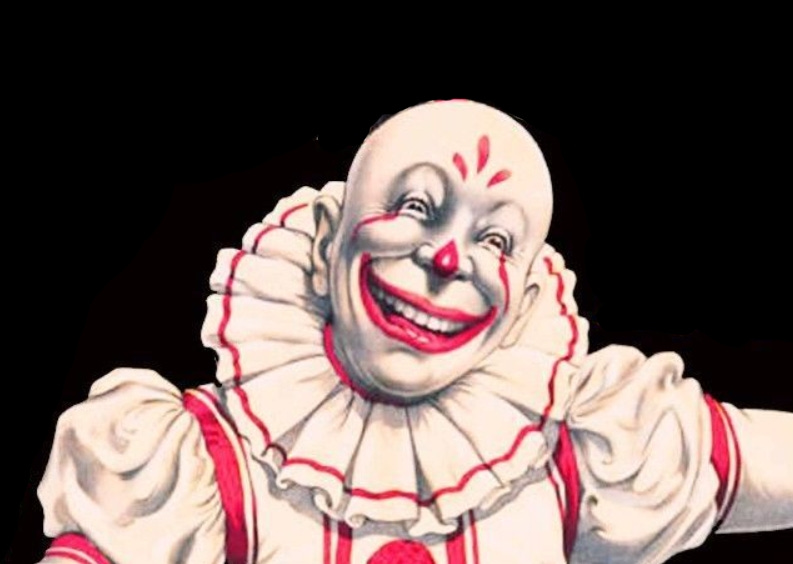
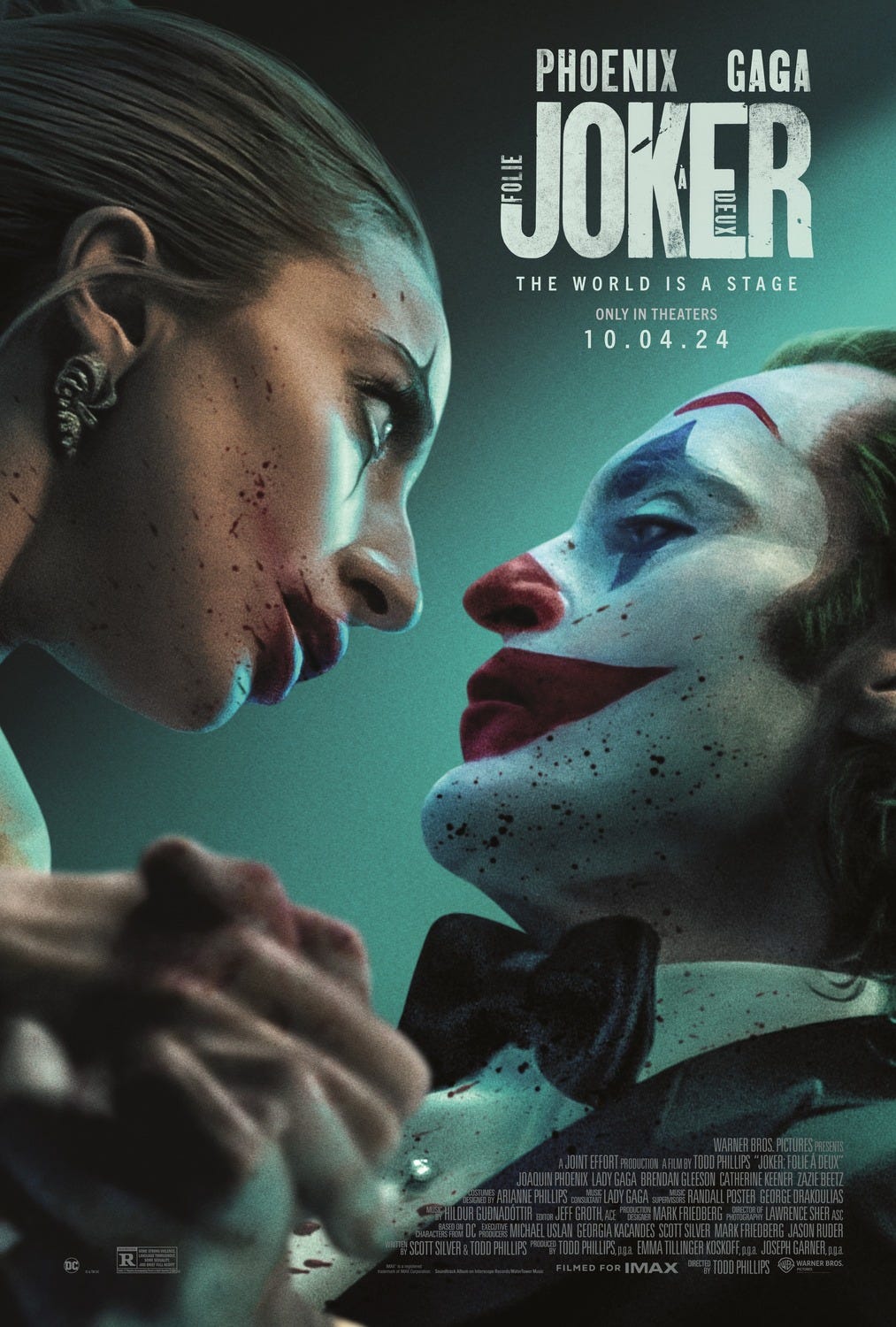
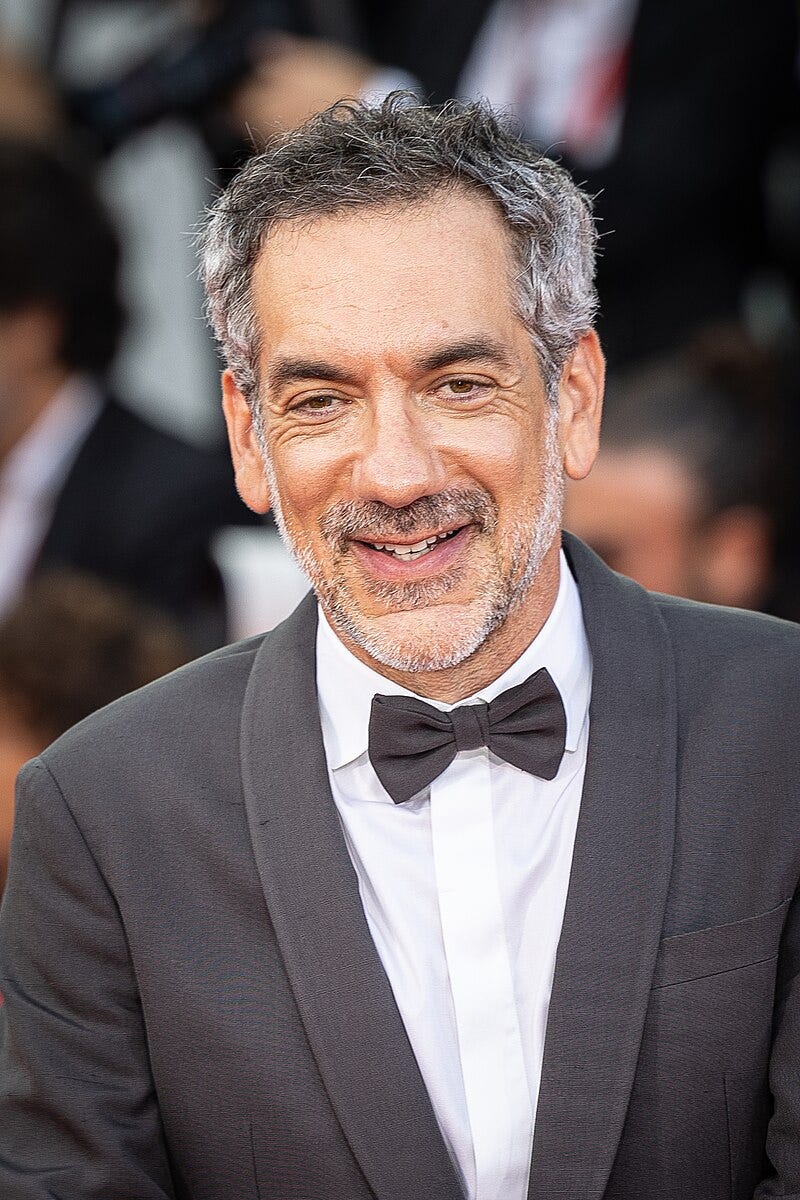
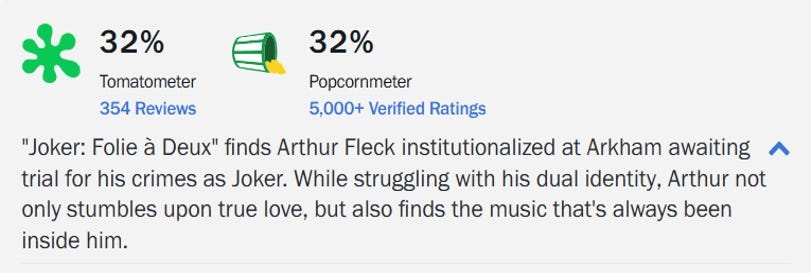
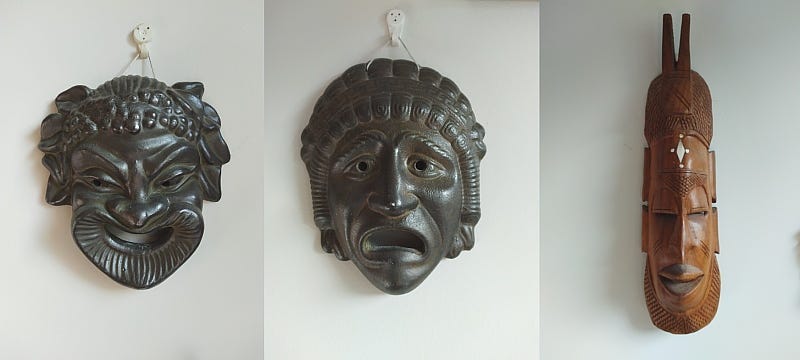
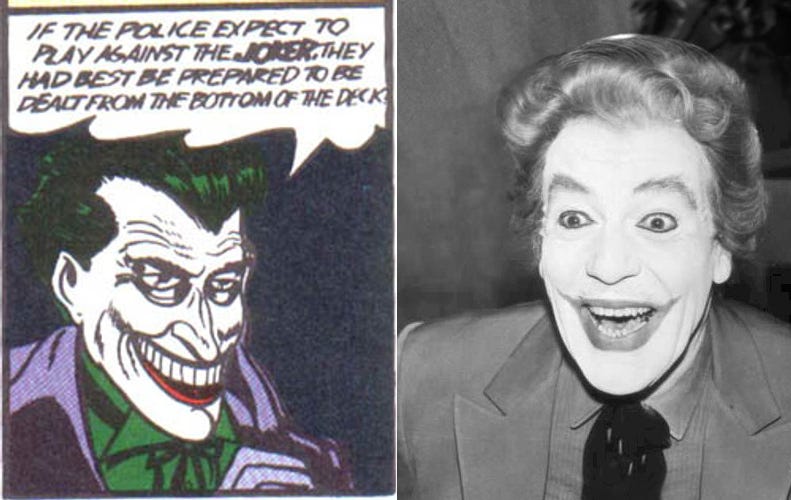
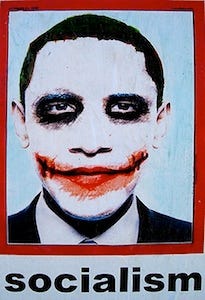
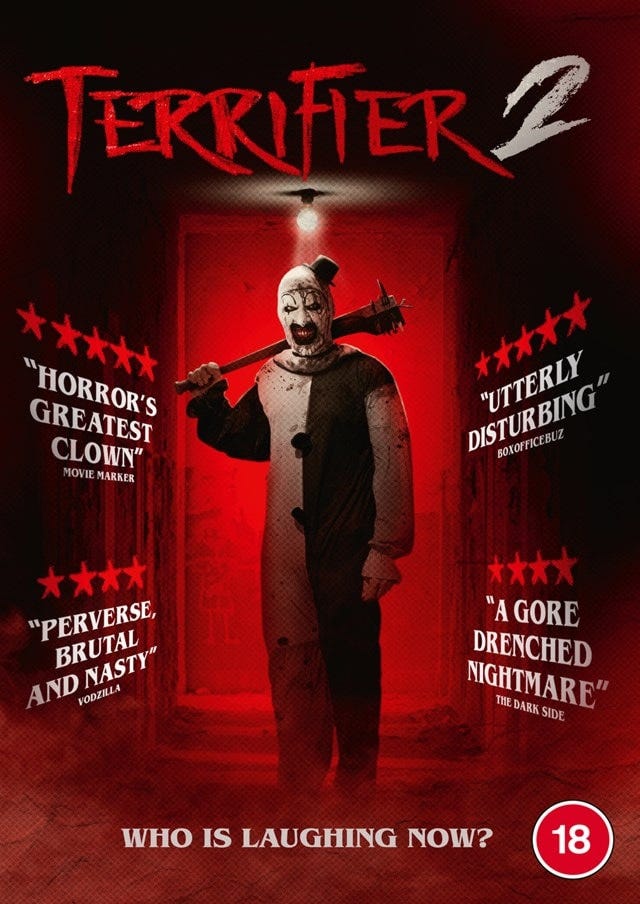

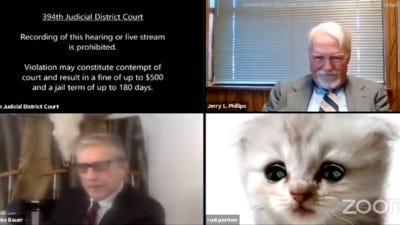
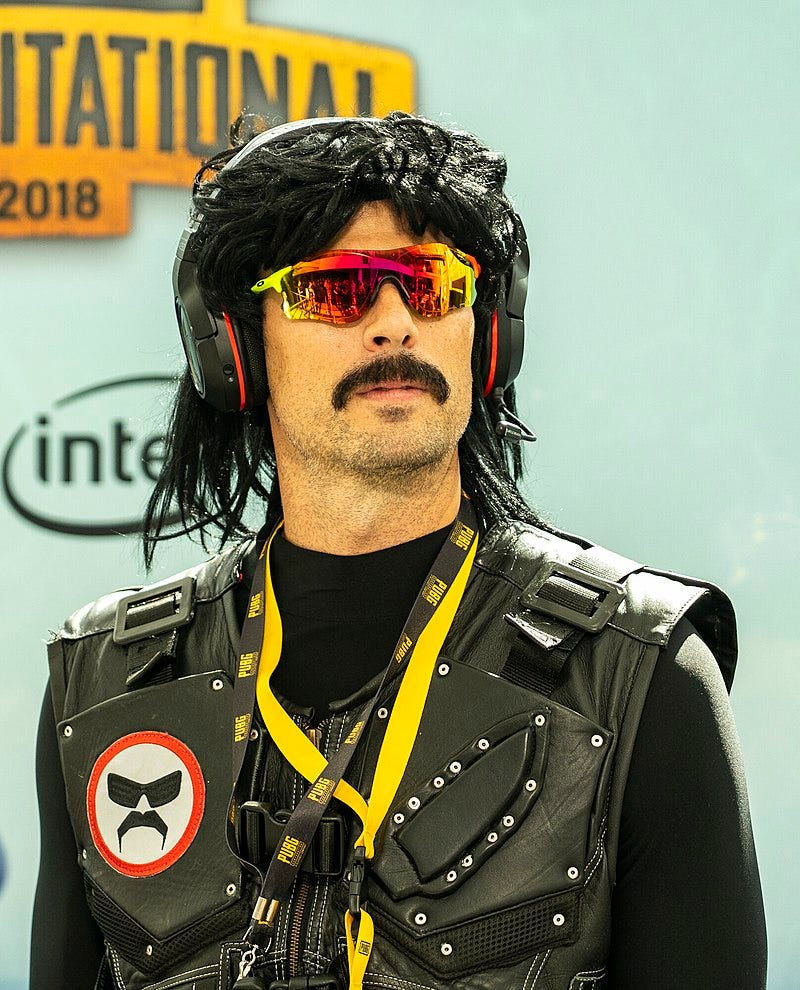
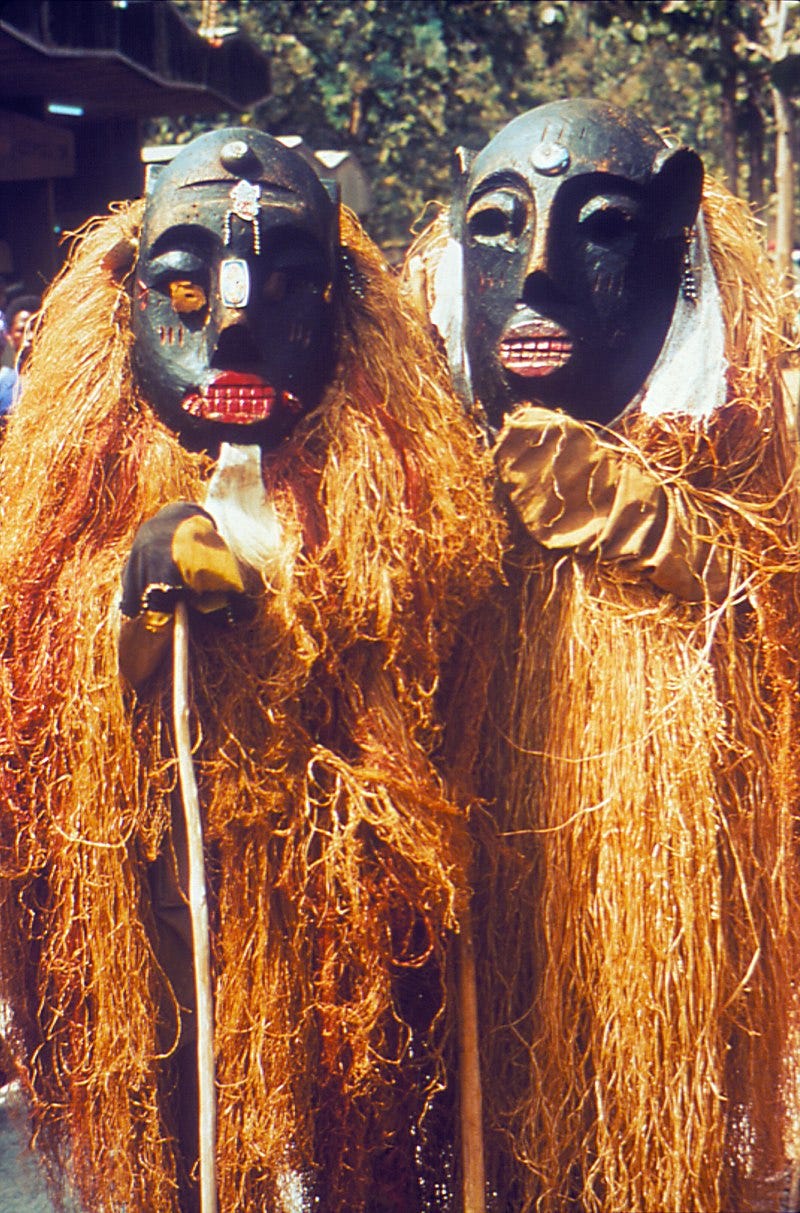
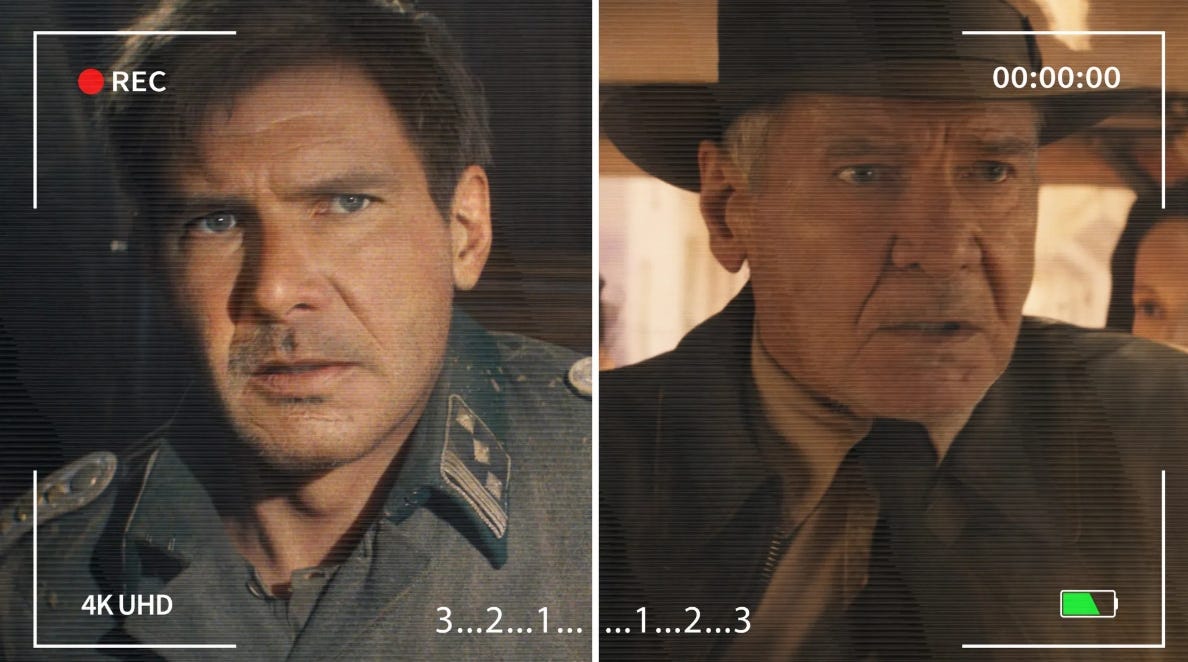



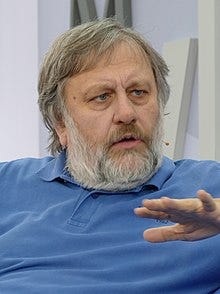
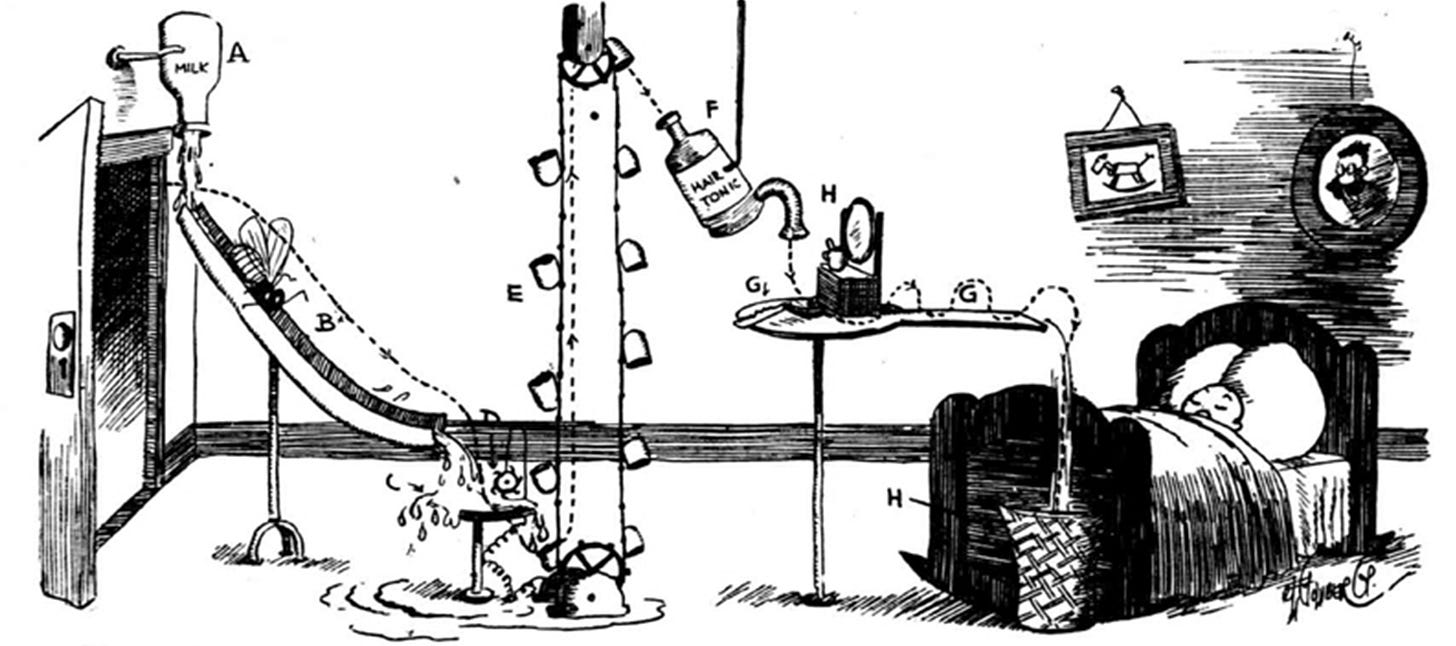


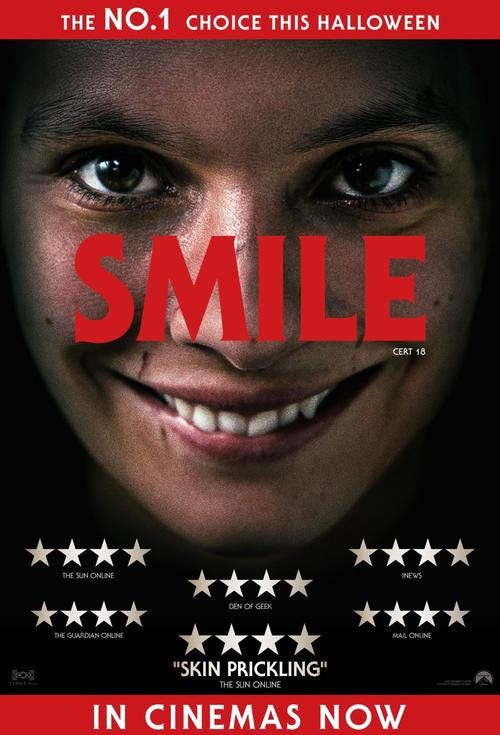
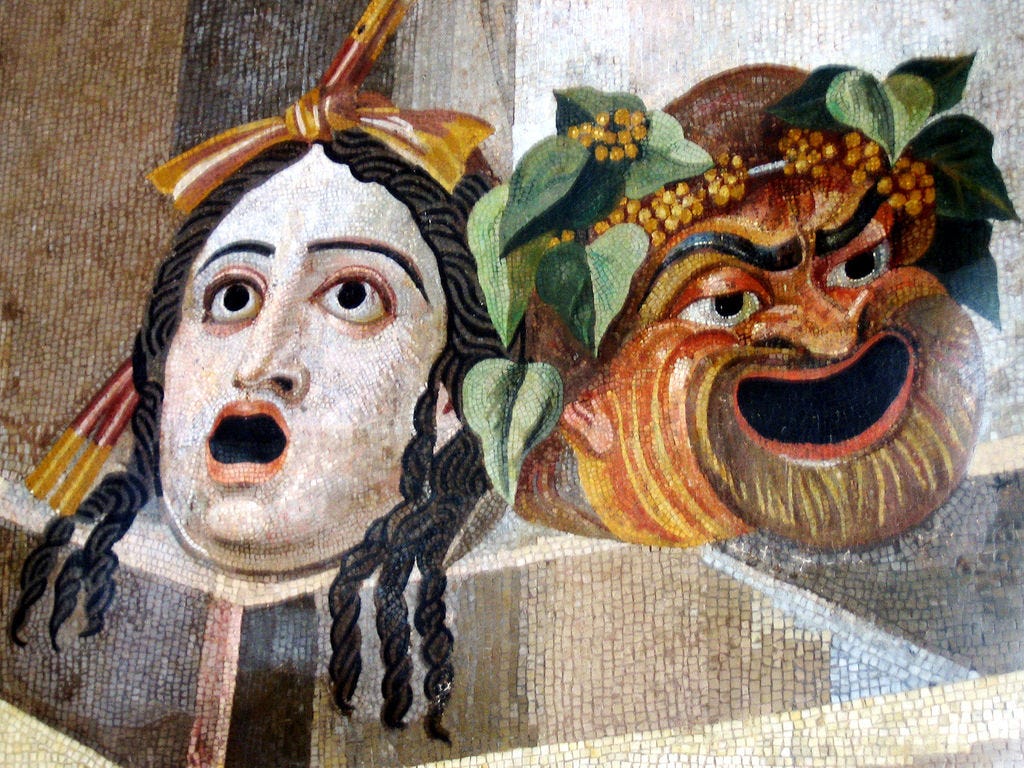

This reminds me of an article I read on Punch as a sacrificial victim, while researching Commedia dell'Arte. (https://nefariousgenius.wordpress.com/wp-content/uploads/2010/04/wicker-man-article.pdf) Not that I think we need to put Trump in a wicker man, per se...
This is all really erudite, but ignores that:
1. Small children often are terrified of clowns (raises hand).
2. Nobody's been wearing a mask since at least 2022. I've friends I see often who are in a nursing home or are on oxygen, so I do, but it'll be me and possibly one Asian woman in any place I go. Right after lockdown supposedly "ended", the only place I went where most people were still masking was the Chinese supermarket.